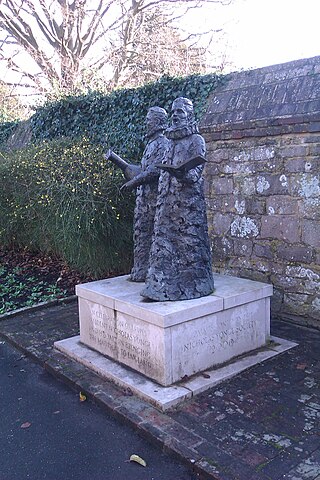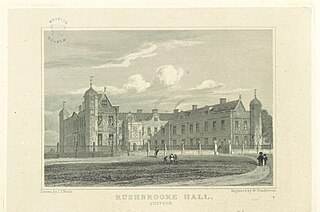Style and characteristics
Most likely the impetus for writing madrigals came through the influence of Alfonso Ferrabosco, who worked in England in the 1560s and 1570s in Queen Elizabeth's court; he wrote many works in the form, and not only did they prove popular but they inspired some imitation by local composers. The development that caused the explosion of madrigal composition in England, however, was the development of native poetry—especially the sonnet—which was conducive to setting to music in the Italian style. When Nicholas Yonge published Musica transalpina in 1588, it proved to be immensely popular, and the vogue for madrigal composition in England can be said to truly have started then.
Musica transalpina was a collection of Italian madrigals, mostly by Ferrabosco and Marenzio, fitted with English words. They were well-loved, and several similar anthologies followed immediately after the success of the first. Yonge himself published a second Musica transalpina in 1597, hoping to duplicate the success of the first collection.
While William Byrd, probably the most famous English composer of the time, experimented with the madrigal form, he never actually called his works madrigals, and shortly after writing some secular songs in madrigalian style returned to writing mostly sacred music.
The most influential composers of madrigals in England, and the ones whose works have survived best to the present day, were Thomas Morley, Thomas Weelkes and John Wilbye. Morley is the only composer of the time who set verse by Shakespeare for which the music has survived. His style is melodic, easily singable, and remains popular with a cappella singing groups. Wilbye had a very small compositional output, but his madrigals are distinctive with their expressiveness and chromaticism; they would never be confused with their Italian predecessors.
The last line of Gibbons' "The Silver Swan" of 1612,
- "More Geese than Swans now live, more Fools than Wise."
is often considered to be a lament for the death of the English tradition.
One of the more notable compilations of English madrigals was The Triumphs of Oriana , a collection of madrigals compiled by Thomas Morley, which contained 25 different madrigals by 23 different composers. Published in 1601 as a tribute to Elizabeth I of England, each madrigal contains a reference to Oriana, a name used to reference the Queen.
Madrigals continued to be composed in England through the 1620s, but the air and "recitative music" rendered the style obsolete; somewhat belatedly, characteristics of the Baroque style finally appeared in England. While the music of the English Madrigal School is of generally high quality and has endured in popularity, it is useful to remember that the total output of the composers was relatively small: Luca Marenzio in Italy alone published more books of madrigals than the entire sum of madrigal publications in England, and Philippe de Monte wrote more madrigals (over 1100) than were written in England during the entire period.

A madrigal is a form of secular vocal music most typical of the Renaissance and early Baroque (1600–1750) periods, although revisited by some later European composers. The polyphonic madrigal is unaccompanied, and the number of voices varies from two to eight, but usually features three to six voices, whilst the metre of the madrigal varies between two or three tercets, followed by one or two couplets. Unlike the verse-repeating strophic forms sung to the same music, most madrigals are through-composed, featuring different music for each stanza of lyrics, whereby the composer expresses the emotions contained in each line and in single words of the poem being sung.

Luca Marenzio was an Italian composer and singer of the late Renaissance.

Nicholas Yonge was an English singer and publisher. He is most famous for publishing the Musica transalpina (1588), a collection of Italian madrigals with their words translated into English. The first of the Elizabethan madrigal anthologies, it was enormously popular, and began a vogue for the composition and performance of madrigals in England which lasted into the first two decades of the 17th century. William Heather, founder of the music chair at Oxford University, included the book in his portrait, painted c. 1627, confirming the longevity of Musica transalpina's influence and popularity.
Alfonso Ferrabosco was an Italian composer. While mostly famous as the solitary Italian madrigalist working in England, and the one mainly responsible for the growth of the madrigal there, he also composed much sacred music. He also may have been a spy for Elizabeth I while he was in Italy.

Thomas Morley was an English composer, theorist, singer and organist of the Renaissance. He was one of the foremost members of the English Madrigal School. Referring to the strong Italian influence on the English madrigal, The New Grove Dictionary of Music and Musicians states that Morley was "chiefly responsible for grafting the Italian shoot on to the native stock and initiating the curiously brief but brilliant flowering of the madrigal that constitutes one of the most colourful episodes in the history of English music."
Thomas Tomkins was a Welsh-born composer of the late Tudor and early Stuart period. In addition to being one of the prominent members of the English Madrigal School, he was a skilled composer of keyboard and consort music, and the last member of the English virginalist school.
Thomas Weelkes was an English composer and organist. He became organist of Winchester College in 1598, moving to Chichester Cathedral. His works are chiefly vocal, and include madrigals, anthems and services.

George Kirbye was an English composer of the late Tudor period and early Jacobean era. He was one of the members of the English Madrigal School, but also composed sacred music.
John Wilbye was an English madrigal composer.

During the reign of Queen Elizabeth I (1558–1603), English art and high culture reached a pinnacle known as the height of the English Renaissance. Elizabethan music experienced a shift in popularity from sacred to secular music and the rise of instrumental music. Professional musicians were employed by the Church of England, the nobility, and the rising middle-class.
Thomas Lupo was an English composer and viol player of the late Elizabethan and Jacobean eras. Along with Orlando Gibbons, John Coprario, and Alfonso Ferrabosco, he was one of the principal developers of the repertory for viol consort.

Musica Transalpina is a collection of madrigals published in England by Nicholas Yonge in 1588. The madrigals had crossed the Alps in the sense that the madrigal form was borrowed from the Italians, and the pieces included in the collection were mainly by Italians, although the lyrics were rendered into English by Yonge. It was the first and largest Elizabethan anthology of Italian madrigals, and marked the beginning of the golden age of the madrigal in England.
Giovanni Ferretti was an Italian composer of the Renaissance, best known for his secular music. He was important in the development of the lighter kind of madrigal current in the 1570s related to the villanella, and was influential as far away as England.
This is a chronological list of classical music composers living or working in England or originating from there. Entries are alphabetical within each year.
Thomas East was an English printer who specialised in music. He has been described as a publisher, but that claim is debatable. He nevertheless made an important contribution to musical life in England. He printed the significant madrigal collection, Musica Transalpina, which appeared in 1588.

Drexel 4180–4185 is a set of six manuscript partbooks copied in Gloucester, England, containing primarily vocal music dating from approximately 1615-1625. Considered one of the most important sources for seventeenth century English secular song, the repertoire included represents a mixture of sacred and secular music, attesting to the partbooks' use for entertainment and pleasure, rather than exclusively for liturgical use.
This page is based on this
Wikipedia article Text is available under the
CC BY-SA 4.0 license; additional terms may apply.
Images, videos and audio are available under their respective licenses.







